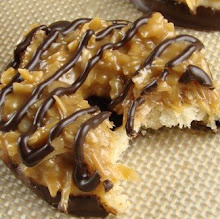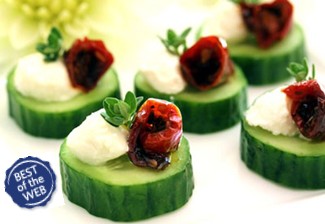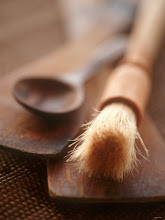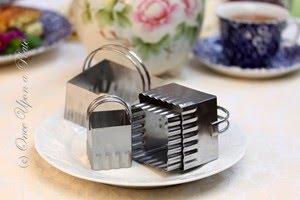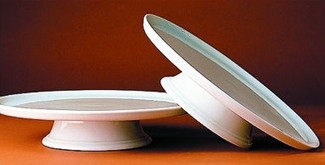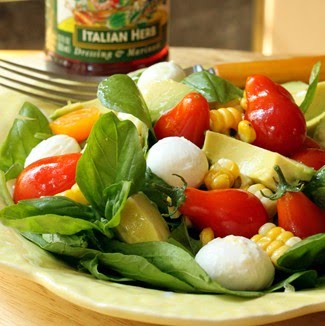 Hi friends, it's been a while since I've posted ~ and it's good to be back!
Hi friends, it's been a while since I've posted ~ and it's good to be back!I've missed your company, and hope you are all well.
Spring and Summer are always a busy time here on our little homestead in the woods ~
the usual maintenance, caring for the pets, plus gardening to keep the forest from taking over the tamed sections of the property is nearly a full-time job. And this year especially busy with our new flock of chickens.
One of the things we have been busy with is the hen house which we designed and he, (Mr. OUaP) built. I'm heart-skippy happy with the results, one of the most fun gifts I've ever received and I want to share it with you.

With the exception of the exterior communal nest box and decorative finishing touches, it is nearly complete. Thankfully the hens will not begin laying until they are about 5 months old (late July, early August) so we have a few weeks to finish the nests.
I chose wood shingle siding for its rustic look which I think fits so well in the wooded forest.
Under Construction :
(The house is 6' x 8' -not including the exterior mounted nest box- and the pen is 15' x 16'.)
As I mentioned in an earlier post, we built the house and pen on the site of the old playground area, to the side of the back of the main house. The playset consisted of swings, a slide and "fort" structure; it was massive ~ constructed from utility poles, with the heavy duty metal slide bought at auction from a local school some 20 years ago.
Over time the structure had become compromised, and it was time to disassemble it. In the following picture, to the back of the pen, you can see the cross bar (utility pole) from which the swings were suspended to give you an idea of its' scale.
Our rural area is host to many predators who would do most anything for a chicken "dinner", so making the house and pen secure was a number one priority. All windows and openings, with the exception of the human door and the chicken door are screened with hardware cloth (19 gauge, sturdy metal 1/2" mesh screen.) The pen is also enclosed (top and sides) with the same hardware cloth.
Why not chicken wire for the enclosure?
I like the rustic and country look of chicken wire, but after doing some research I learned that is it NOT a secure method of keeping predators out ~ unless it is reinforced or used with live electrical wire/fencing.
After reading of some other's tragic experiences I learned traditional chicken wire is for keeping chicken fenced in, but not predators out.
The perimeter of the playground area was built from 10" x 10" redwood timbers and filled with pea gravel (which we left in place.)
Mr. OUaP excavated a portion of the pea gravel to build the hen house foundation and pen area, so the pea gravel became a walk way around the pen.
The perimeter of the pen foundation is made of 2"x 12" pressure treated wood and buried deeply beneath the pea gravel, but that is not deep enough to keep a determined predator from digging under. To keep critters from burrowing the pen edges hardware cloth was laid flat around the entire perimeter of the pen, and is buried beneath the pea gravel.
For the pen floor we had 2 truckloads of decomposed granite delivered which Mr. O
spread and compacted. It provides good drainage, and is easily raked clean each day.
Details of the exterior~
The doors and shutters are constructed of cedar ~ and I can't wait to see the wood shingle siding begin to age and darken for a nice contrast to the cedar.
I have a few ideas for container plantings near the the doors, and along the pen to add interest and color.
I wanted to carry out the rustic look so I chose hand forged iron hardware from Restorers (on line), with the exception of the human door. For reasons of practicality we went with these heavy duty self-closing gate hinges from Stanley, purchased locally.
I've had the rooster bell for years, and just moved it from one of the garden gates.
A peek inside:
One of the crucial factors to keep in mind when housing chickens is that they MUST have plenty of ventilation, but without drafts. We incorporated as much ventilation as possible while attempting to maintain the style of the structure.
What we thought would be a good idea for easy clean up ~a slide-out droppings board on the floor~ was not practical for a couple of reasons:
"We" ended up with substantially MORE chickens than the 5 we originally planned for (I couldn't resist adding a few more different breeds.) :D
This changed our plan as we realized we needed to free up as much floor space as possible, so we mounted a slide out droppings board a few inches beneath the roosts ~ a much better arrangement and easy to clean each day.
We're using the deep pine shaving method* on the floor of the hen house---I was skeptical at first, but it has been working out beautifully.
*(Fragrant pine shavings are layered approximately 4-inches deep, and simply fluffed up each day with a rake, then cleaned out and replaced as necessary.) Some find they only need to replace the shavings each 6 months or so ~ but I anticipate changing it out every 3 months due to the number of chickens and size of the house.
Out of view here, to each side of the human door are a hanging waterer and a hanging feeder.
Incidentally, we mounted hardware wire, attached to the rafters as a ceiling to prevent the chickens from roosting there~ chickens like to roost at the highest place they can find... which would be a nightmare when it comes the the "droppings" issue.
Still, we have one little renegade, Olive, who insists upon roosting in the sill of one of the eaves every night, so we eventually added a wider ledge up there for her.
(Her spot is the eave sill directly above the roost in the corner in the picture below.)
I have plans for livening up those walls to add some additional color ~
I'll update as things progress.
Currently this is the largest ventilation opening:
It provides a good cross draft when open, it also functions as a small awning when propped open ~ I leave it open every day, rain or shine.
(Eventually Mr. O will construct a hardware cloth screen door to fit inside the human door.)
If you know chickens, you know they are creatures of habit~

This little sweetie (a Silver Laced Wyandotte) jumps up on the sill every single morning to greet me when I open the window.
Of all the chickens she is the only one who does this, as if it is her assigned duty.
She and her Silver Laced sister are the youngest and most friendly of the flock.
And THIS is what follows when I open the chicken door/ramp:
 ?
?
A blur of chickens!
Hurrying out to get their morning treats.
There is Olive (the renegade who sleeps up high) leading the girls.
We kept the shutters simple~ one on the opposite end of the house from the human door, and one on the side, opposite the large window.
Mr. O wired the electricity~ which allows for a fan to keep the air moving on hot days, and a light to encourage them to continuing laying into the winter months, and an outlet for a heat lamp in cold weather.
So far everything has been working out very well. They have been in their new home for several weeks and I'm really pleased that the usual "aroma" (aka stinky, noxious fumes) associated with chicken coops hasn't been a problem, and the chickens seem happy and healthy.
Next time I'll share some shots of the girls, almost all grown up ~

Thank you SO much for stopping by ~ it's always a pleasure to hear from you.
Please note: If you have sent me an email in the past couple of weeks to which I have not responded ~ please bear with me, I'm getting to each one as time permits.
Thanks for your understanding.
Have a wonderful weekend everyone!
xoxo ~m.

















